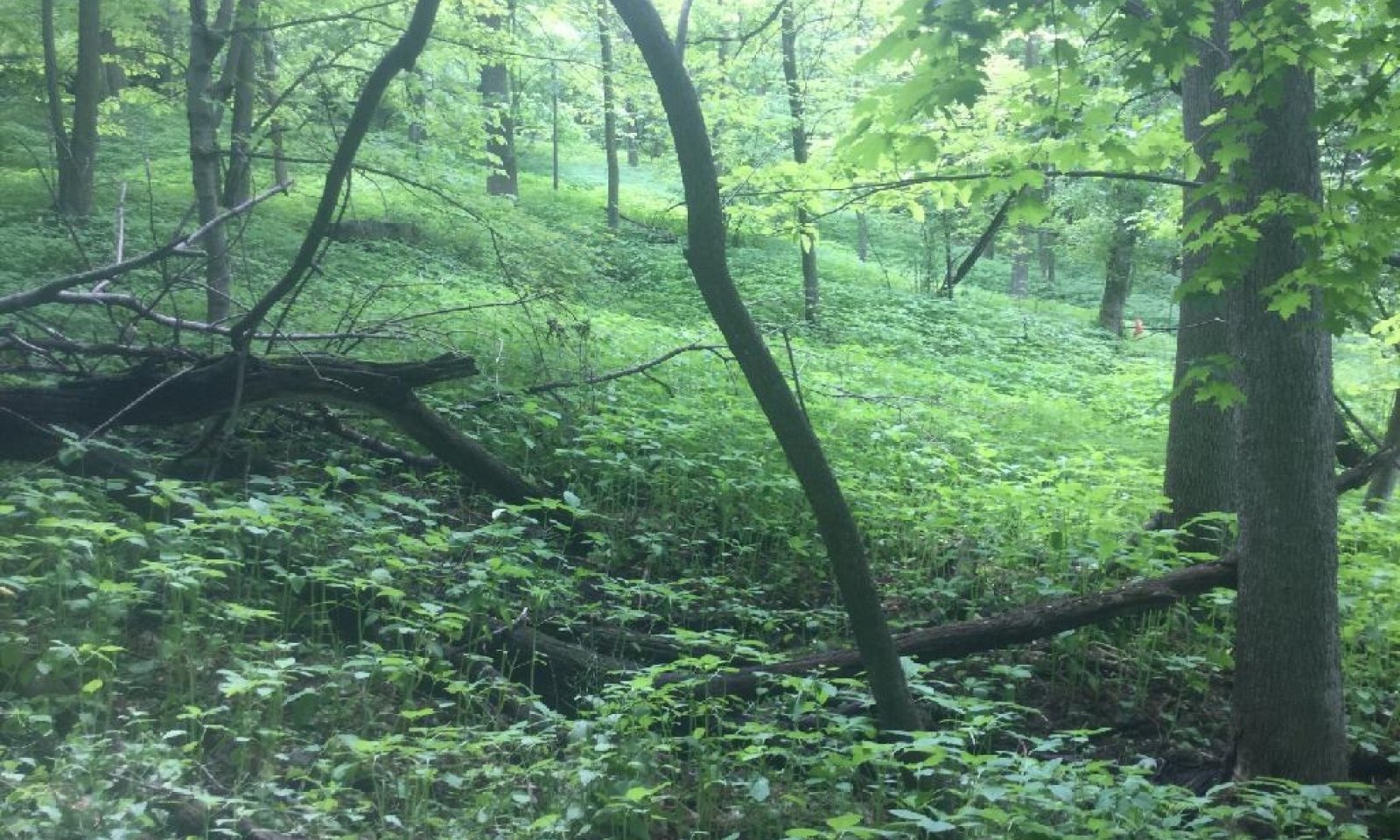
Shallow Upland
Scenario model
Current ecosystem state
Select a state
Management practices/drivers
Select a transition or restoration pathway
-
Transition T1A
Stand replacing disturbance that includes fire.
More details -
Transition T1B
Removal of forest cover and tilling for agricultural crop production.
More details -
Restoration pathway R2A
Deciduous forest community is slowly taken over by shade tolerant maples and other species.
More details -
Transition T2A
Removal of forest cover and tilling for agricultural crop production.
More details -
Restoration pathway R3A
Cessation of agricultural practices leads to natural reforestation, or site is replanted.
More details -
Restoration pathway R3B
Cessation of agricultural practices leads to natural reforestation, or site is replanted.
More details -
No transition or restoration pathway between the selected states has been described
Target ecosystem state
Select a state
Description
The reference state of this ES is mostly likely to be dominated by mesic hardwoods (Sugar maple and White ash) with a likely presence of Basswood and oaks and hickories. The reference state is probably mostly expressed in the “Rejuvenated Community Phase” as canopy openings and small scale disturbance are common on this ES.
Submodel
Description
This state represents the post disturbance establishment of pioneer species and the further development of the site through a mid-successional state. An initial population of aspen or birch (or a mixture) will dominate and later give way to a mixture of deciduous trees leading into mid succession.
Submodel
Mechanism
Transition T1A – Major stand-replacing disturbance. In pre-European settlement time, the event was most often a severe blow down, sometimes followed by fires. Such blow downs have been estimated to occur in this part of Wisconsin every 300 to 400 years (Schulte and Mladenoff, 2005). In post settlement virtually every acre has been logged either by clear cutting or successive cuts targeting species marketable at that time. Post logging slash fires also have been a significant factor in most areas. These disturbances created the environment suitable for natural regeneration of many shade-intolerant species and for commercial planting.
Mechanism
Removal of forest cover, tilling and application of other agricultural techniques to grow agricultural crops.
Mechanism
A period of some 70-100 years without major stand disturbance, especially fire, leads to decreased presence, through natural mortality, of early successional species and the dominance of shade tolerant sugar maple with less tolerant associates of red oak and white ash, returning the community to Reference State.
Mechanism
Removal of forest cover, tilling and application of other agricultural techniques to grow agricultural crops.
Mechanism
Abandonment of agricultural practices and allowing natural vegetation to colonize the site or apply artificial afforestation. The time required for forest community to reach the reference state conditions may exceed 100 years.
Model keys
Briefcase
Add ecological sites and Major Land Resource Areas to your briefcase by clicking on the briefcase (![]() ) icon wherever it occurs. Drag and drop items to reorder. Cookies are used to store briefcase items between browsing sessions. Because of this, the number of items that can be added to your briefcase is limited, and briefcase items added on one device and browser cannot be accessed from another device or browser. Users who do not wish to place cookies on their devices should not use the briefcase tool. Briefcase cookies serve no other purpose than described here and are deleted whenever browsing history is cleared.
) icon wherever it occurs. Drag and drop items to reorder. Cookies are used to store briefcase items between browsing sessions. Because of this, the number of items that can be added to your briefcase is limited, and briefcase items added on one device and browser cannot be accessed from another device or browser. Users who do not wish to place cookies on their devices should not use the briefcase tool. Briefcase cookies serve no other purpose than described here and are deleted whenever browsing history is cleared.
Ecological sites
Major Land Resource Areas
The Ecosystem Dynamics Interpretive Tool is an information system framework developed by the USDA-ARS Jornada Experimental Range, USDA Natural Resources Conservation Service, and New Mexico State University.
